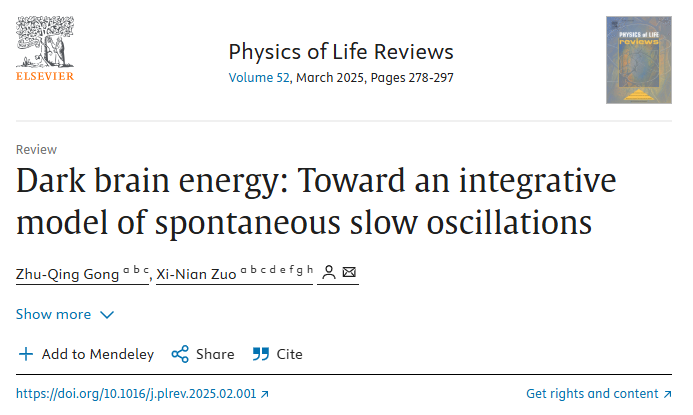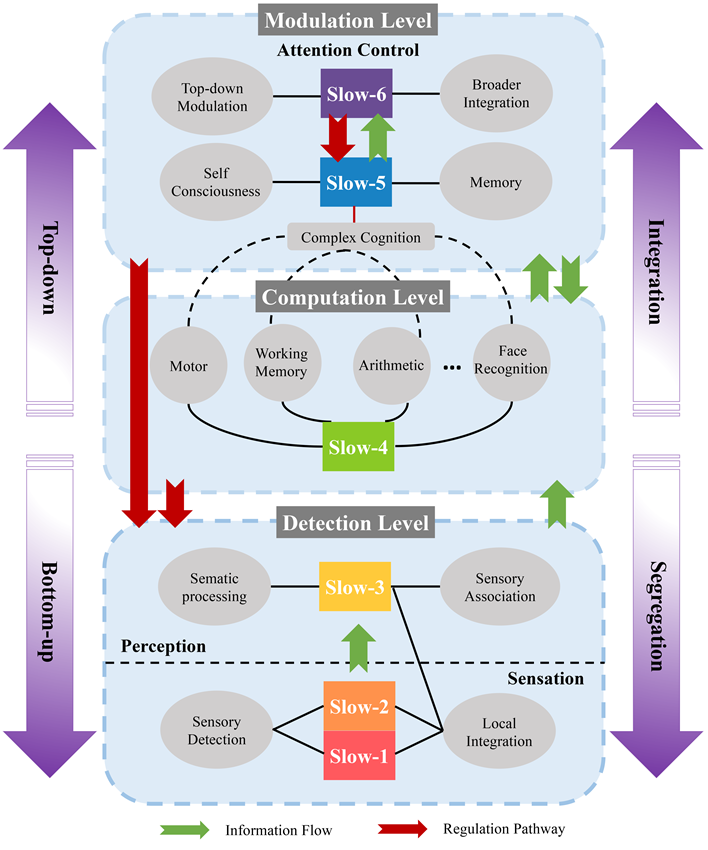Professor Zuo Xinian's Team from the Faculty of Psychology at Beijing Normal University Published a Paper in Physics of Life Reviews
The research team led by Professor Zuo Xinyan from the Faculty of Psychology at Beijing Normal University published a paper titled "Dark brain energy: Toward an integrative model of spontaneous slow oscillations" on spontaneous slow oscillations (SSOs) of the human brain in Physics of Life Reviews.

Brain oscillates slowly and spontaneously as a high-order, elaborated system by leveraging the BOLD-rfMRI. Over the past decade, gradual advances in our understanding of this hierarchical system based on slow-frequency bands with distinct oscillation patterns and associated clinical conditions have been achieved. This review summarizes and disassembles the evidence from previous studies characterizing the functions of each band. A three-level integrative model emerged from these observations, illuminating how these slow bands are segregated and integrated in complex brain systems to achieve different levels of brain oscillations in the organizational hierarchy. With potential insights of this model into the mechanisms on brain's dark energy, this review provides a theoretical framework to guide the interpretation of findings and design of experiments for both basic and clinical research, representing a paradigm shift for future human brain mapping studies.

The abstract of the paper is as follows:
Neural oscillations facilitate the functioning of the human brain in spatial and temporal dimensions at various frequencies. These oscillations feature a universal frequency architecture that is governed by brain anatomy, ensuring frequency specificity remains invariant across different measurement techniques. Initial magnetic resonance imaging (MRI) methodology constrained functional MRI (fMRI) investigations to a singular frequency range, thereby neglecting the frequency characteristics inherent in blood oxygen level-dependent oscillations. With advancements in MRI technology, it has become feasible to decode intricate brain activities via multi-band frequency analysis (MBFA). During the past decade, the utilization of MBFA in fMRI studies has surged, unveiling frequency-dependent characteristics of spontaneous slow oscillations (SSOs) believed to base dark energy in the brain. There remains a dearth of conclusive insights and hypotheses pertaining to the properties and functionalities of SSOs in distinct bands. We surveyed the SSO MBFA studies during the past 15 years to delineate the attributes of SSOs and enlighten their correlated functions. We further proposed a model to elucidate the hierarchical organization of multi-band SSOs by integrating their function, aimed at bridging theoretical gaps and guiding future MBFA research endeavors.
Reference: https://doi.org/10.1016/j.plrev.2025.02.001


